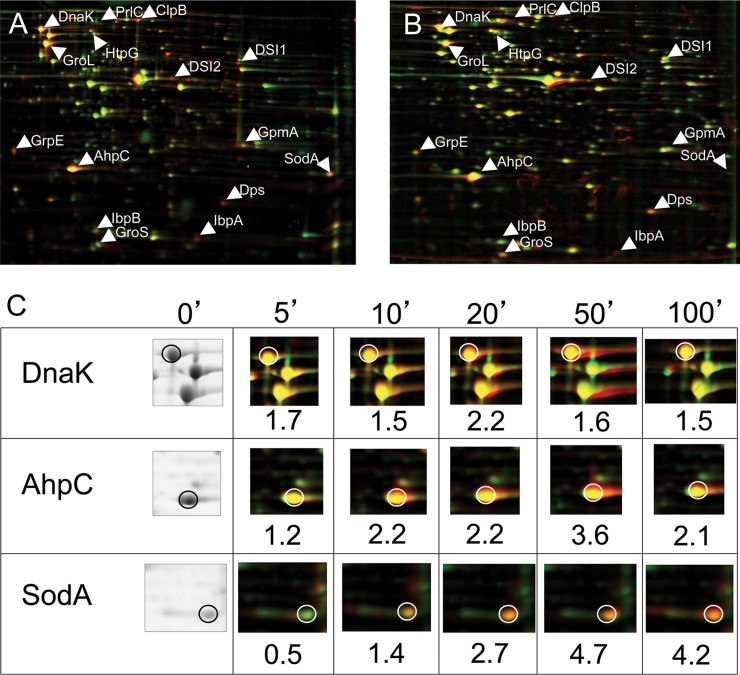Fig 3.
Disulfide stress induces oxidative stress and heat shock genes in E. coli. (A) False-colored overlay of 2D gels of cell extracts of E. coli wild-type (DHB4) cells grown under control conditions (green) and 30 min after addition of 1 mM diamide to the medium (red). Protein spots that are induced upon addition of diamide appear red. Proteins that are upregulated more than 1.5-fold 10 min after addition of diamide are labeled. (B) False-colored overlay of 2D gels of cell extracts of E. coli Δtrx Δgor (WP778) cells grown with DTT in the medium (green) and 30 min after removal of DTT (red). WP778 is a strain that lacks thioredoxin reductase and glutathione oxidoreductase and forms disulfide bonds in the cytoplasm when grown in the absence of DTT. Proteins induced under disulfide stress conditions upon removal of DTT appear red. Proteins upregulated more than 1.5-fold 10 min after addition of diamide are labeled to facilitate comparison. (C) Time course of the induction of selected heat shock and oxidative stress genes upon addition of diamide. Incubation times with diamide and induction factors are indicated.

